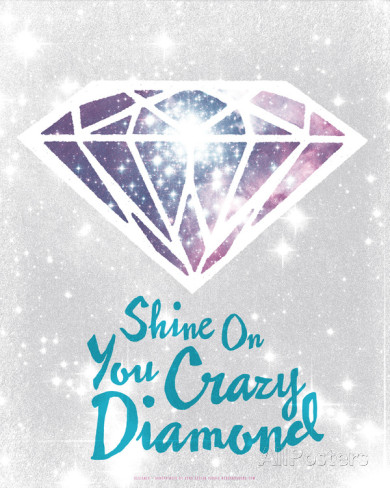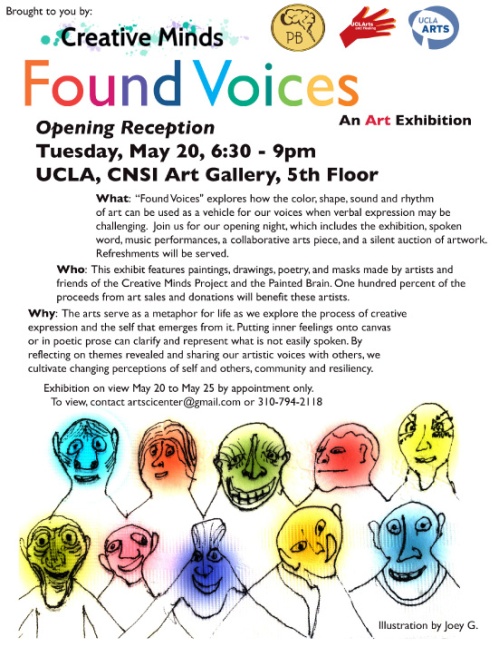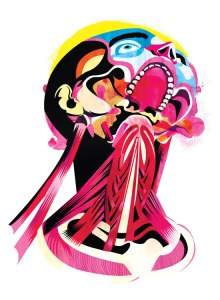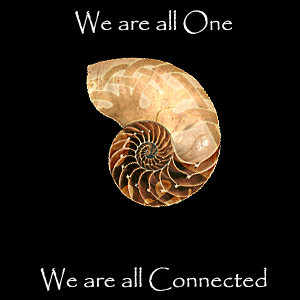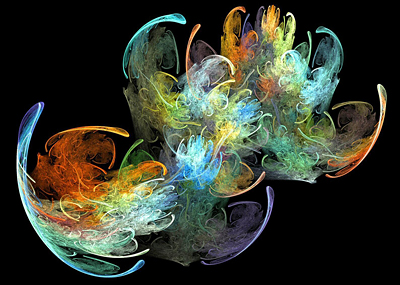By Micheal Cornwall, Ph.D., posted in Mad in America
He will be featured this Saturday, December 8th, (11amPT/2pmET) on MindFreedom Radio with the theme: “If madness isn’t what psychiatry says it is, then WHAT IS IT?” Hope you can join the conversation!!
____________________________
In my last three blogs I posed the question- “If madness isn’t what psychiatry says it is, then what is it?” Now I’m asking- “If madness isn’t what psychiatry says it is, then how should we respond to madness?’
Here are some thoughts that I wanted to share with you about how to effectively serve your clients, friends and loved ones who are having an experience of madness. These ideas may also be of help in doing self-care if you are entering or traversing a madness process yourself.
They are followed by my quite personal and un-orthodox neo-Jungian formulation of madness. That formulation and these practical suggestions are mainly gleaned from my own un-medicated, untreated experience of madness in my early twenties, and from working daily as a primary therapist for almost 30 years with actively mad clients using a Jungian/Transpersonal, Laingian approach.
During that time I worked for over 3 years at the 24/7, alternative, 20 bed, free standing, transpersonally oriented, acute care open door program called I-ward in Martinez California where no medications or leather restraints were used or diagnoses given to consumers who were acutely mad, which I describe in my last blog- “Remembering a Medication-Free Madness Sanctuary.”
I also helped develop a similar 5 bed program in Marin County, Passages In, that was short lived. I did several months of internship at St. George’s Homes in Berkeley where a similar Jungian/Transpersonal approach was used. After that I worked for 25 years in public sector clinics and on a mobile crisis team as well as in private practice. Even in those settings, most of the mad clients I served were not on medication.
I also am drawing on my doctoral research follow-up study done on the San Francisco based, medication free Diabasis House sanctuary for clients in acute madness, and my 20 year relationship with its founder, Jungian psychiatrist John Weir Perry. But my early experience of serving from age 18 as a medic in the Army and Air Force Reserve for 8 years and then as a State Hospital attendant with profoundly developmentally delayed men- and for 2 years as an orderly at a nursing home with brain damaged, demented and Alzheimer’s patients, also informs my advice on how to relate with love to people in physical and emotional pain and suffering.
So, here are two basic principles for helping someone or yourself in a madness process which are distilled from my own personal and work experience and from the study of successful Bay Area alternative programs.
1. Keep suspending your disbelief
Every time you tell yourself or believe that the mad person you are being with, or you yourself has a tragic, lifelong, and threatening illness that has no inherent meaning or purpose- such as a neuro-biological, genetically based diseased brain, an incurable thought disorder, or chemical brain imbalance- try to suspend your disbelief that another explanation may be possible.
Instead, hold the belief that they or you are going through a necessary, meaningful, developmental, initiatory, trans-formative, transpersonal/ archetypal, symbolic and/or purposive natural process – one that is neither pathological nor indicative of a genetically inherited, neuro-biological brain disorder.
Hold the belief that, as Dr. Karl Menninger famously said, it is possible to emerge from the madness process- “Weller than well!”
2. Be Receptive
Once you are able to stay open to the possibility that this process is an important, potentially transformative natural life event, draw on all your skills of receptivity and empathy. Begin by simply listening and receiving the person or your own experience with an open, compassionate heart. Let the gentle feelings of love that you would feel for a loved one who is frightened and suffering be present within you.
As this process unfolds, gently invite and encourage the expression of both the emotional and symbolic content. People in a madness process may need to use modalities such as drawing, painting, movement and evocative music to express themselves in addition to or instead of speech. Somatic modalities of touch and bodywork can be especially welcomed and grounding and soothing.
The common and overwhelming evidence from the Agnews project, Diabasis House, I-Ward, Soteria House and other alternative programs from all over the world, confirms the basic need for a person in such a madness process to be believed in, listened to and lovingly received and responded to in this way.
Some years ago I co-led a workshop on madness with Loren Mosher of Soteria and Mathew Morrisey of the medication free sanctuary Burch House. We all agreed that the necessary and sufficient condition for someone to traverse a madness process into wholeness, was the presence of heart centered people around them who received the person’s emotional and symbolic process with a certain level of compassion that I would call love.. Those loving people did not need to be professionally trained.
This view was also expressed by R.D. Laing when asked- “Dr. Laing, I still don’t understand the theoretical basis of your approach to schizophrenia. Could you please explain?”
“Certainly,” said Laing- “The basis is love. I don’t see how you or I can be of any help to our clients in a visionary state unless we are capable of experiencing a feeling of love for them. Therapy, as opposed to mere treatment requires that we have a capacity for loving kindness and compassion.”
The questioner was still perplexed and asked- “But Dr. Laing, what is your clinical methodology for developing this approach?’
A recent Facebook post from a psychiatic nurse shows how the very subtle, even non-verbal communication of the energy of love can dramatically effect someone who is mad-
“I remember once bathing a woman, who was diagnosed “schizophrenic”, who had not responded or spoken for 20 years. I remember feeling some affection and sadness for her as I washed her gently in the tub. All of a sudden she started to respond and called me mommy and rose up from her catatonic state. The care, the loving touch got through to her.. I will never forget that.”
It is the same very familiar feeling tone of caring love that we often feel for our children or mates as we nurse them when they are ill, that can be evoked between us and someone in a madness process if we open our hearts beyond what professional mental health training teaches.
The nurse’s story makes me remember working with a man who was almost 80 years old who was diagnosed bi-polar and who had been in the hospital many times. Even though I was almost 30 years younger, because I sat with him with my heart very open and asked for his dreams, after some time he came with a healing dream. He had been depressed his whole life and said that his mother was always very harsh with him and had never in his childhood told him that she loved him or touched him with love or hugged him..
He reported his healing dream with tears of gratitude and joy because in it he was a young boy again, held warmly and rocked for a very long time by his mother who repeated wonderful terms of endearment and told him over and over that she loved him..
He then said-’And the strangest thing was Michael, she was bald just like you are.’
So, in that spirit of risking to call what we may feel for ourselves or others in a madness process as being in fact love, here are observations I slowly learned for myself the past 30 years about how to more specifically make yourself available to anyone in a madness process. The list is only an attempt to begin a conversation and exploration of all the possible ways we can be of service.
- To be most helpful try and feel like your inner subjective state is more emotional than mental.
- Create a physical and emotional state of receptivity. Let warm feelings of caring be present in you.
- With your feet flat on the floor, hold the awareness that there is now a solid base and foundation beneath you.
- Remember to keep your anal sphincter relaxed.
- Keep a focus of energy in the hara chakra below your navel.
- With your stomach muscles relaxed, feel yourself do deep and slow belly breathing.
- Drop down your shoulders.
- Let your face become calm and relaxed–not becoming pensive or quizzical.
- Let your voice come up from your hara in lower octaves, emerging with the energy of your heart chakra as you speak..
- Let your kindly, gentle, even loving and tender feelings of empathy and compassion arise in your heart chakra for a fellow human being in distress and suffering who is sharing the room with you.
- Don’t seek direct eye contact if it seems to make the person uncomfortable.
- The person may be in a very heightened state of awareness and is processing minute inflections in your voice and body language.
- Their ability to see into you may surprise you as uncanny and psychic.
- In this state they may directly or symbolically tell you secret things about yourself that are disquieting.
- If the person is hostile increase your vigilance on your own physical and emotional markers of receptivity.
- Because you may find that you may involuntarily be holding your breath.
- You may notice your throat becomes constricted and your voice goes up in octaves.
- You may notice you are opening your eyes very widely and blinking a lot.
- You may feel the need to fold your arms across your chest or cross your legs.
- To the degree that you can be aware of these shifts in you prompted by anxiety, you can refrain from them as much as possible and remain in the open, receptive, emotional and physical posture with a potentially physically or verbally assaultive person in a madness process.
- The more you stay grounded and centered the more they will calm down, will not sense a fight or flight visceral response to them building in you.
- Being with agitated people in a madness process is kind of like practicing an internal martial art at times- a form of Aikido.
Madness is an ancient form of uncivilized wildness. It also is a sacred mystery.
Emily Dickinson said it well-
“Much madness is divinest Sense–
To a discerning eye–
Much sense–the starkest Madness–
‘Tis the Majority In this, as All prevail–
Assent–and you are sane–
demur–and you are straightaway dangerous
and handled with a chain.”
If you are given the opportunity to serve those traversing the mysterious depths and heights of madness count yourself lucky, especially if they are not emotionally anesthetized by medication.
The efficacy results from the Northern California based Agnews Project, I-Ward, Diabasis, and Soteria House all clearly demonstrate that without medication, most first time, acute madness crises will in fact be the occasion for a life changing developmental and possibly even a spiritual transformation if a 24/7 alternative, non-medical model sanctuary is provided.
My experience and research into alternative approaches for serving those in an acute madness process has led me to believe that at least 75% of the consumers who become trapped in the mental health system could have avoided that fate if acute care, 24/7 Bay Area sanctuaries like Diabasis House, Soteria and I-Ward (where I worked )were available at first contact with the system.
They never would have gone on to be labeled Schizophrenic or Bi-Polar or Schizo-Affective.
But even for those not blessed to have a sanctuary to go to during their initial excursions into madness, hope is not to be lost.
John Perry acknowledged that my utilizing Jungian dream work with consumers who had been medicated for years such as the older man I told about above, extended his work on acute episode madness into another level. He had not worked with long term consumers.
After all the sanctuaries were forced to close in the Bay Area, I got to do therapy with long term people who were mad as well as acute phase consumers in clinic settings.
Against conventional wisdom and the wishes of my clinical supervisor at work, but with the tentative encouragement of doctoral program clinical supervisors John Perry, David Lukoff and Jungian, Tanya Wilkinson, I started asking consumers to share their dreams. For many, their psyches had just been waiting to be asked!
The buried, un-experienced, un-named, un-expressed affect/emotion that was the prime causal factor in their becoming mad in the first place was re-animated as archetypal dreams of emotional power and symbolic expression came pouring forth. It took years for some people for their psyche to do it’s work of resurrection and to allow the person to have access to the full range of human emotions without becoming mad as before, whenever too strong and intense feelings would come alive.
One of the many contibutions that John Perry made to a Jungian approach to madness, was to wonderfully re-defined the meaning of ‘archetype’ to mean- ‘affect-image.’ He meant that affect and the image are co-equals of archetypal activation and experience.
I would take that further and say that affect, emotion is the source of all imagery, every word, thought, facial expression, auditory and visual hallucination, so-called delusion. We are first and foremost emotional beings who from conception begin to rage, weep and laugh and hide in terror and dance for joy- and seek to receive and give the emotion of love. For me, by definition, everyone who is mad is in an archetypal, transpersonal experience, just as everyone who isn’t mad is too.
The artificial distinctions that label some mad people chronic schizophrenics and others blessed to be in a spiritual emergency don’t exist for me. The mumbling, homeless mad person is just as deserving of our seeing that they are in a spiritual wasteland where the Gods of the wasteland rule as the person who is having amazing, visionary experiences that we are inspired and maybe dazzled by,- who brings Hermes or Persephone or Kwan Yin into the room with us as often happened on I-Ward.
The New Age and sometimes Transpersonal Psychology over emphasis on defining spirituality and spiritual emergency and spiritual emergence as being only enlightening and uplifting is an unfortunate mistake. The elevator goes down as well as up.
Spiritual experience means to me the contact with spiritual energy. From my own initiatory madness some of it is dark I know. Some of it is light I know. Darkness initiates just as much as light does. It turns out that both light, love emanating energy and rightly feared dark, dangerous spiritual energies are sometimes active in bringing balance through transformative madness as well as in- ‘normal’ life.
Based on my experiences on I-Ward which I describe in my last blog, I believe that if you spend much time with people in acute madness experiences who aren’t medicated you will encounter an uncanny presence of what can be viewed as spiritual light as well as darkness. That is another reason madness has been feared as being demonic until science/medicine said it was all in people’s heads- and came up with perverse ways to silence it that at times would make an inquisitor smile.
Jung said that: “Psychiatry has turned the Gods into diseases.”
Unfortunately Jung and most Jungians have turned the Gods and Goddesses into archetypes: named and minutely described denizens of the collective unconscious that we can have an ‘as if’ relationship with at weekend workshops and schoomze with once and a while in our dreams. Unless we go mad and then we know them intimately.
Traditional Jungians have identified the forms, the affect and imagery tracings of the gods from dreams and visions, but rarely ask them into the consulting room for an embodied visit. They haven’t turned the gods into diseases, but they have not honored them through the timeless practice of ritual where the gods were fervently called forth to have their way with the initiate. The 50 minute hour with some active imagination is about as wild as it gets!
Jung greatly feared going the route of Nietzsche who died raving mad. Perry extended Jung’s work on madness because he named it as purposive if welcomed with open arms. Jung exhorted analysts to terminate an analysis if a single dream of a patient looked like a sign of an- ‘incipient psychosis.’
Please don’t make the mistake of too greatly fearing madness or underestimating the spiritual dimension of our human birthright as you may practice your own shamanic vocation or seek to understand the mysteries of others or your own madness.
One of my favorite Jung quotes points to that mystery-
“These inner motives spring from a deep source that is not made by consciousness and is not under it’s control. In the mythology of earlier times these forces were called mana, or spirits, demons or gods. They are as active today as they ever were…the one thing we refuse to admit is that we are dependent on ‘powers’ that are beyond our control.”
In my experience, behind every image, thought and word, there is an emotion first. Behind every emotion there is a universal so-called archetypal power and emotional energy that must come forth as imagery that expresses that deep emotion. Behind every archetype is a totally autonomous living force of deity that has no historical bounds, no time bound archetypal form.
These ancient and emerging deities, that use our lives and bodies as their playgrounds and every second hold us in sway as they incarnate themselves in us, ever emerging anew, arise out of a greater unifying mystery of benevolent silence.
Weep for the prophets and so-called psychotic visionaries who are robbed of their life giving gifts from the Gods by our culture of fear and human arrogance. And weep for us that we still treat the mad ones among us as lepers when they are, and always have been a divine source of the mana we need to survive on earth.
As a first ever, initial madness process begins, the psyche is faced with such overpowering unbridled emotion that the inner emotional charge grows to become profoundly existential in nature and magnitude. As the person faces the initiatory challenge of young adulthood in such an all pervasive liminal depth, the ego, the frail manager of consensual reality, simply is engulfed.
The ego is swamped in the soul depth liminality of an emotional power that triggers all forms of desperate, seemingly delusional attempts to give some fragmented sense of meaning to the inner experience. It is a visceral, first chakra existential experience that seizes the individual. It is the emotional response to being lost. It may be experienced mainly as one feeling exalted and indestructible at first or feeling totally terrified, doomed and bewildered.
The experience may also fluctuate between being plunged into the underworld and being drawn up into heavenly realms with amazing rapidity. In these dramatic ways the process mirrors shamanic initiatory ordeals described in every cultural lineage.
In any event, if not made numb by medication, the psyche creates a mythic story along predictable lines. The drama is played out on the stage of the central archetype, the Self, where every kind of polarity may be experienced and transmuted: good/evil, dark/light, male/female, life/death, terror/serenity, grief/joy, desolation/birth. All the emotion generated and image fueled polarities may be contained in the mandala crucible of the relationship that you, the loving caregiver, creates with the person who is mad. In that container with you, all the polarities can be balanced into a cohesive unity.
That loving feeling toned relationship with you is crucial, it is a prerequisite for transformation and healing to occur.. Without a loving ‘other’ to make the mandala crucible which gets forged by the connection of their two hearts and psyches, the mad person spins on out of control. Acute madness is the ultimate identity crisis and is for some, a potentially shamanic initiation. Our feeble, arrogant egos usually assume we are master of knowing “Who am I?”
As the pre-madness/visionary ego floats in this ignorant vulnerability over an abyss of the unfathomable depth of the collective unconscious and spirit world of gods, demons and ghosts, the ego is always just a few nights without sleep away from psychosis, or a drop of LSD away from psychosis, or from a psychosis triggered by a kundalini eruption, or a loved ones sudden death.
The unprepared ego of an especially vulnerable young adult facing autonomous functioning separate from their family is at risk from drowning in the depth of the affect and images of the collective unconscious. It is remarkable that the childhood tasks of such a vulnerable ego do not overwhelm it. However, in the late teens and young adulthood comes the awareness of mortality and the knowing that physical survival and social acceptance and success depend on functioning separately from parents.
The broad range of every possible human emotion I mentioned above that is our human birthright and imperative to experience and claim, makes up the magma of the madness eruption that is too strong for the young adult. These emotions come boiling up to the surface because the young person has hit the developmental hurdle of young adulthood.. In their families, full emotional experience and expression was not allowed and made possible for them to sufficiently master.
Now the psyche will try and rectify that through transformative madness.
Because of the power of our toxic and soulless culture to create enormous deficits in our family systems, most notably an epidemic of the lack of a strong infant-parental love bond, when faced with the often cruelly threatening social Darwinism cultural gauntlet one must traverse into young adulthood, the pre-madness ego for some is simply not prepared to traverse the hero’s journey and initiation across so much underlying liminality.
We can’t underestimate the corrosive and pervasive effects on vulnerable children and young adults that our largely loveless and spiritually barren patriarchal culture inflicts through degradation ceremonies of endless winner-loser competitions where shame and guilt and fear of punishment break the spirits and hearts of so many.
For such vulnerable young persons, an affect of an unnamed existential terror, the dreadful sense of an abyss of yawning ontological insecurity seizes them. This overpowering challenge may then trigger an attempted visionary alternative restructuring of the ego through a radical immersion in a mythical inner struggle for adult independence.
This inner heroic struggle for ones future life is carried out at the archetypal center of the Self, if the young person’s process is not aborted, if they are given sanctuary and not medication. I have seen them come out the other side with a new, heroic ego strength that grew out of their trial by fire.
As the great R.D. Laing said after witnessing and attending many on such a journey at the Kingsley Hall sanctuary he provided:
‘From the alienated starting point of our pseudo-sanity, everything is equivocal. Our sanity is not true ‘sanity.’ Their madness is not true ‘madness.’ The madness that we encounter in ‘patients’ is a gross travesty, a mockery, a grotesque caricature of what the natural healing of that estranged integration we call sanity might be. True sanity entails in one way or another the dissolution of the normal ego, that false self competently adjusted to our alienated social reality; the emergence of the ‘inner’ archetypal mediators of divine power, and through this death and rebirth, and the eventual re-establishment of a new kind of ego functioning, the ego now being the servant of the divine, no longer it’s betrayer.’
